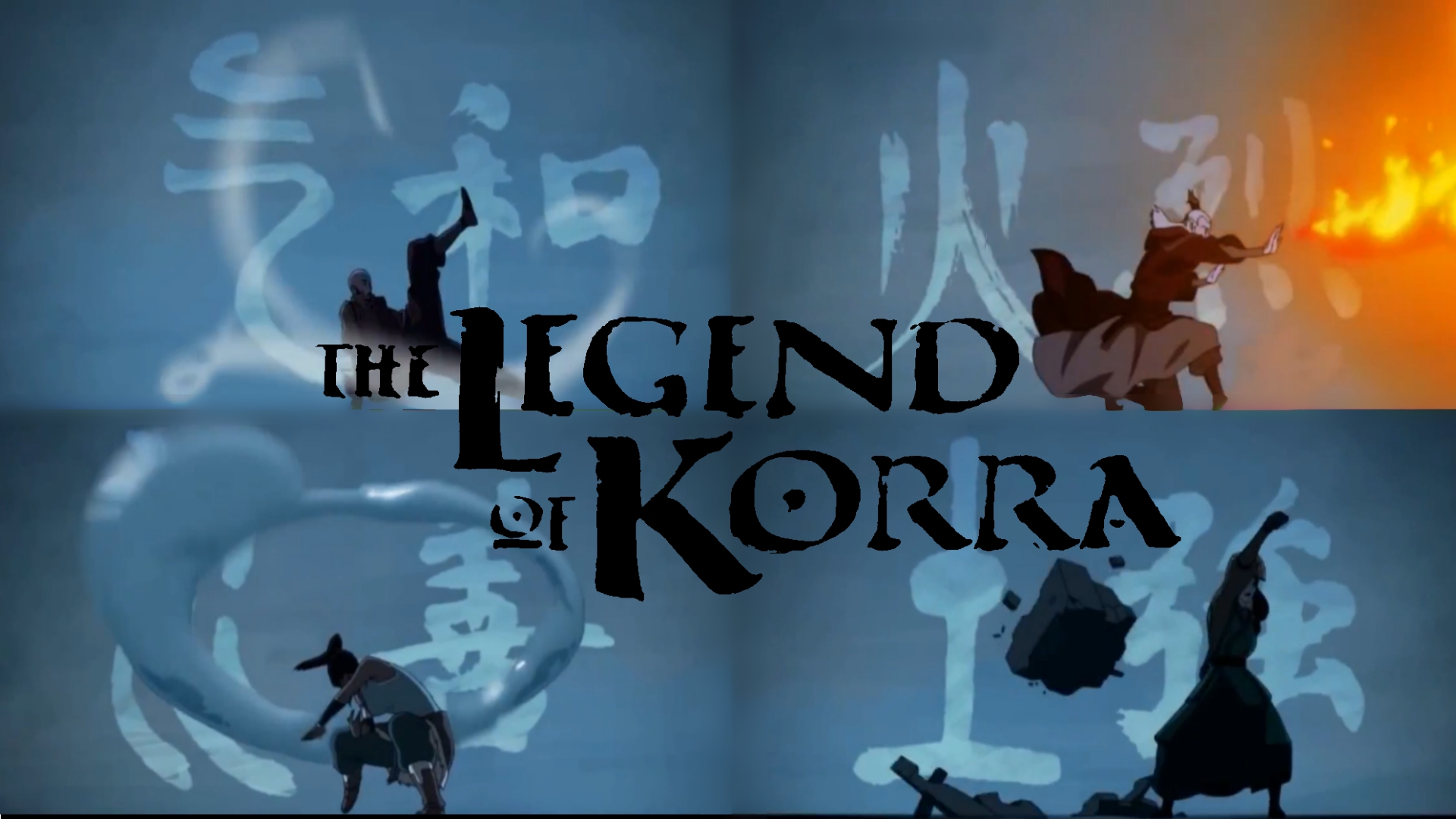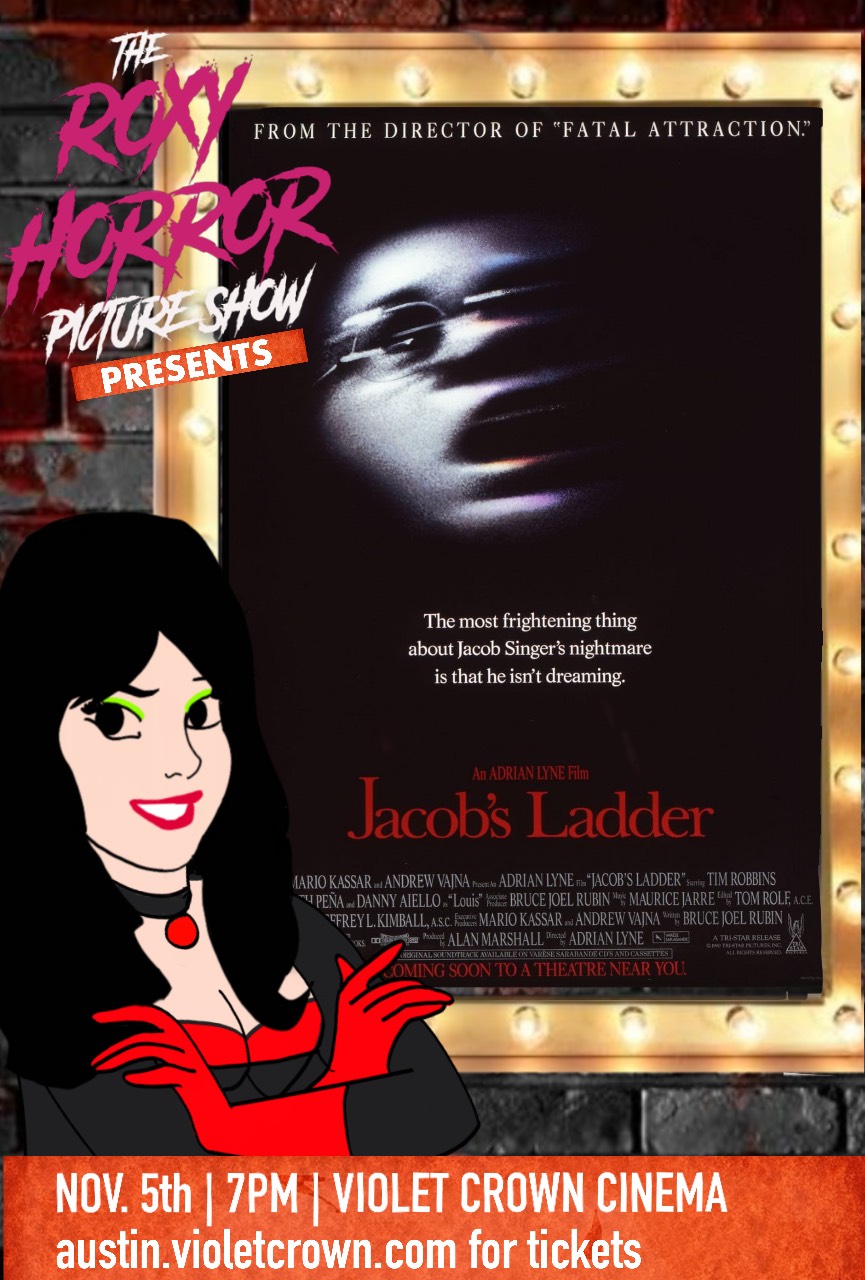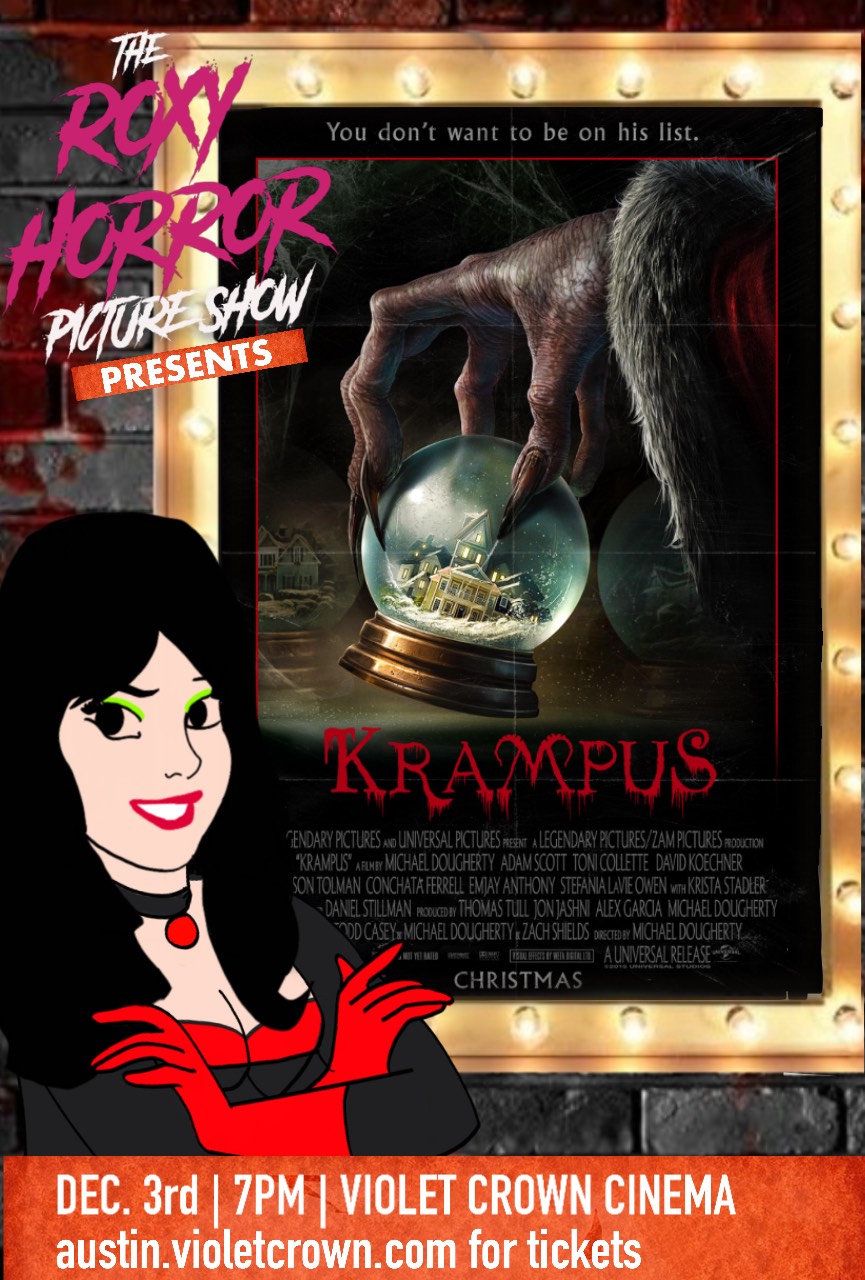Welcome back to Animated Anarchy for our first full-on review covering the Legend of Korra! Although we promote the use of carnage against cartoons, we are not supported by the Red Lotus. After going through years of developmental hell rivaling that of Arrested Development, The Legend of Korra has completed its fourth and final season as of Friday, December 20, 2014.
The arc of the Avatar fighting against the modern threats of an industrializing world and trying to connect back to our spiritual nature has finished, as Korra, Mako, Bolin, Tenzin, Asami, Lin Beifong, and Varrick have concluded their adventures for now. There’s so much more to discover in the Avatar universe, but it’ll take some years or some new reincarnations in games or comics to see what will be done next.
I want to say now that this will be an in-depth, spoiler-heavy review of the series as a whole. So if you haven’t watched all of Korra and you are invested with how it wraps up? You have been warned. But for a quick review: The fans have loved how this show that created a new plotline since Season 2 wrapped up so well in such a tightly-packed amount of time. I loved it too, as the action was at it’s most beautiful and it ended with so many satisfying payoffs for certain characters. So as I talk about the finale, I will be covering every season’s build-up, development, and overall quality.
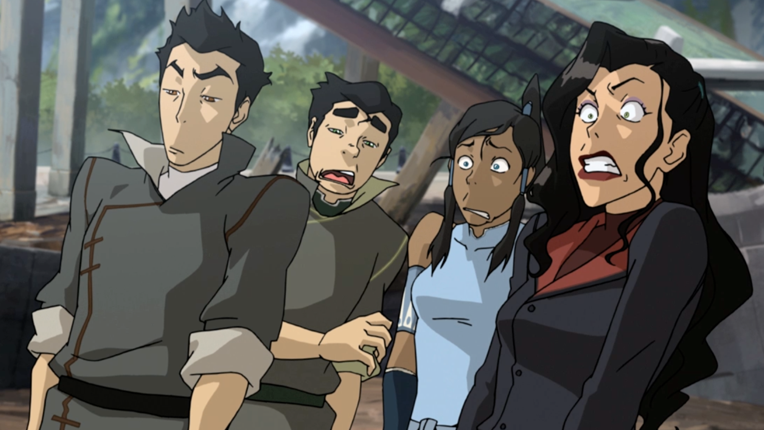
Book One: Air
Season 1 is the most standalone of The Legend of Korra, as directors Michael Dante DiMartino and Bryan Konietzko created this season originally as a one off. And by itself, it’s such a tightly made, great mini-series that feels as a natural evolution from the “Warring States” feel of The Last Airbender. At the turn of the century combing elements of technology and bending makes for some really sweet inventions and new ways to stir up trouble. There’s a greater shift towards organized crime and political manipulation that makes it harder for the Avatar to do his/her hands-on approach to balance.
Korra works as a fascinating opposite to Aang as Korra is very powerful and good at handling responsibilities, but is more headstrong and less in tune with the spiritual nature. She’s talented, but there’s a lot to keep her grounded compared to many of Aang’s hidden-layers under his unbridled positivity. You have the brothers Mako and Bolin who work as a fun pair focusing the plot around a pro-bending circuit. We also have Aang’s son Tenzin, voiced expertly by J.K. Simmons, who is a fantastic tutor and guardian to help Korra understand Airbending and is endearing thanks to his dynamic, entertaining family.
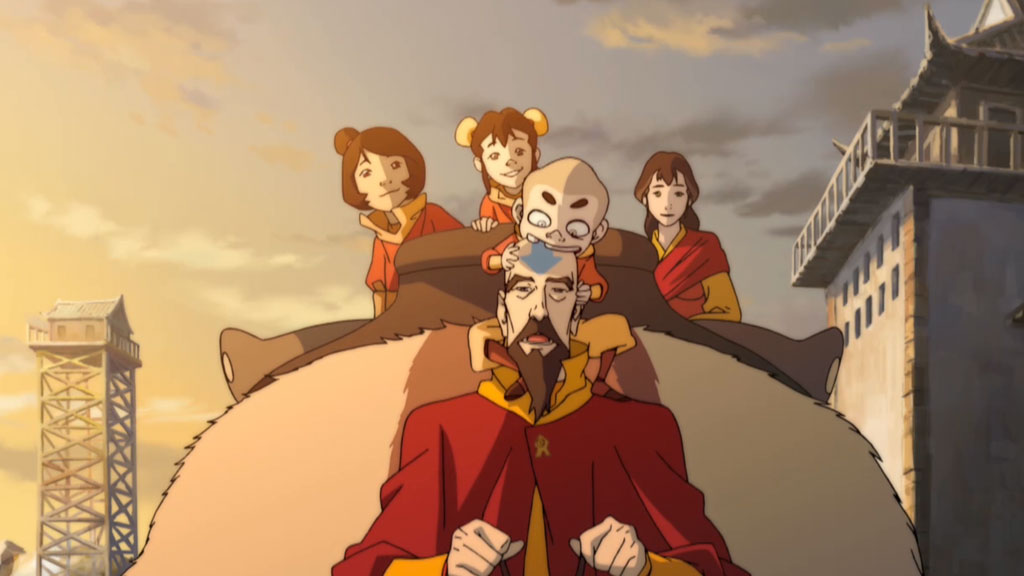
Book 1: Air has a really superb balance between the fun of Korra exploring the new setting of Republic City and exploring the seedy underbelly of radical new forces. Along the way Korra and Mako make waves fighting gangsters with the police chief captain Lin Beifong and getting to know industrialists Hiroshi and Asami Sato. All the build up is captured beautifully in Episode 6, when Amon and the Equalists ruin the stadium of the pro-bending circuit.
The antagonist of this season, Amon, is genuinely scary…arguably the most fanatical villain of the entire Avatar universe. He has stirred up the pot by asking the biggest question of the series…what do the non-benders do? He’s absolutely compelling as he is able to control Republic City with his devoted, fascist group. I’d even throw in that Hiroshi works as a great secondary antagonist, as he’s able to make Amon’s rise to power come to life because of his own feelings. The stakes increase with every single episode and the way they call back to the original series is brilliant. The action is beautiful and the final episode involving the fate of Amon and his brother is one of the most defining moments in children’s entertainment.

That being said, there are two significant problems with this series that can’t go unnoticed. There’s a forced love triangle but between Mako/Korra/Bolin that was poorly handled and an entire episode was devoted to it. The Last Airbender had romance between several characters, but it was never as blatant or forcibly dramatic. It’s a flaw of the series as a whole that would be hard to shake off for a while. Many people also complain that the ending is too squeaky clean wrapped everything up and having Korra and Mako kiss at the end. As a one-off, I wasn’t really bothered by the decision to end it this way, but everything else was so expertly done I couldn’t knock it.
Now I would normally reduce some points for how it’s touched on in later seasons, but that’s not the case. Season 1 is so incredibly stand-alone that it doesn’t cover much of the continuity later on. The Equalists aren’t touched on again and Amon is hardly mentioned with exception of an occasional flashback. The best thing Season 1 did was provide a backdrop to make the new world so fascinating and bring up so many possibilities combing spirituality with our modern necessities. It’s clean, it’s trimmed, and it’s damned entertaining for what it was able to pull off.
Season 1 Arbitrary Rating: 9 out of 10 Pro Bending Trophies
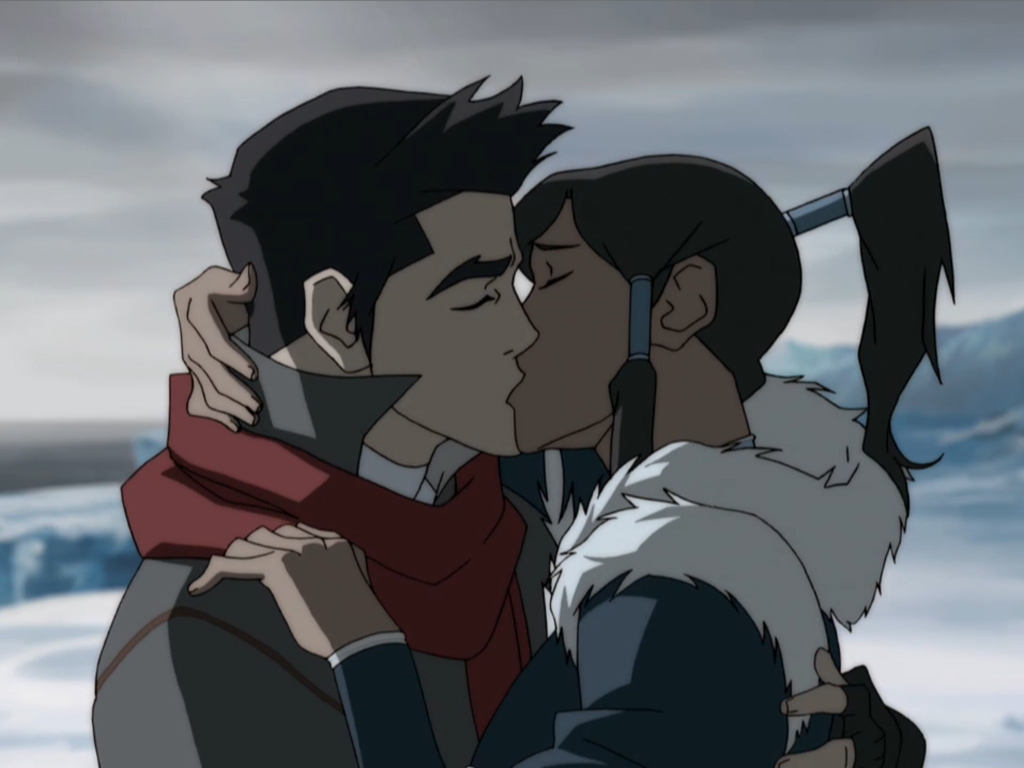
Book Two: Spirits
As Season 2 moved into production, Nickelodeon decided to give the directors three more seasons to expand Korra, making it a full on universe in it’s own right. But this meant more characters to create, a new villain, and exploring where Korra’s and Mako’s relationship was going to go. Along with this new surging production, Avatar’s standard animation company Studio Mir had been temporarily replaced with Japanese Studio Pierrot. I believe because of all of these sudden, massive changes, Konietzko and DiMartino had created what is easily the worst season of the Avatar franchise.
Season 2 began on really rocky territory, introducing the villain Unalaq and bringing in more of the political aspects of potentially creating a war between the Southern and Northern water tribes. We get to see a lot of new characters, but there’s a surprising lack of depth amongst most of them. Korra’s cousins, Deska and Eska, are a clichéd duo of unemotional twins who seem bored with everything, and the female gets into an abusive relationship with Bolin that is played too much for laughs. We finally get to meet Korra’s parents who have some unique history with Unalaq, but they feel majorly like minor supporting characters. Tonraq, Korra’s Father, in particular is probably the worst voice actor amongst everyone in the cast.
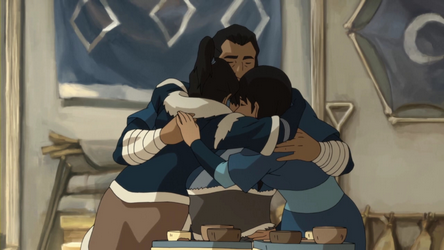
What hurt the worst about this season is that the writing and character interactions took an enormous hit in quality. Korra, who we loved so much conquering her fears backpedal hard into petulant, whiny brat who doubted and fought against everything in her way. Bolin became incredibly doofy and egocentric, and would beg his brother on minute to help him out of his terrible relationship, but then jeer him at him in another scene when things would fail due to his own volition. There’s even hope introduced as we meet Aang’s other children, Bumi and Kya, but their only lines consistent of complaining that Tenzin was the favorite or that Aang was never actually there to raise them. Not only did it become noticibly weak and tedious, but quite predictable at times.
The one character that saved this season to make it still watchable was Varrick, casted perfectly by character actor John Michael Higgins. His dialogue is the most charming and unique and he’s able to breath in some life and general zaniness that was missing in this very dour season. He has all of the best elements of Sokka, but there’s a real conniving aspect of his nature that made him such a standout. He also managed to transform Bolin into a hysterical running gag, making him a “mover” star with his inept, Ed Wood-style of directing and inserting random, yet brilliant ideas for promotion.
But going back to the issues, we soon find out that Unalaq also suffers from the bad writing and is…motivated mostly out of spirit-fueled crazy. This isn’t the really good development we had with Fire Lord Ozai’s dictationship, instead a sadly simple “I want to destroy the world and let the spirits roam free” motivation. It gets so hopeless and desperate by the end, which they had to forcibly end the season with a Deus Ex Machina to solve several of the problems. Especially with Eska/Deska finally acknowledging their father’s evil actions at the last minute or having Jenora discover a giant tree that no one seemed to notice. It ends in well-made, giant spirit fight very akin to Pacific Rim, and peace is restored, albeit with spirits now entering the real world.
Now you might be asking, what about the two-part Beginnings episode that explains the origin of the Avatar? Okay…here’s my biggest controversial opinion of the entire series. I think the origin story is just…okay. I love Avatar Wan, I think the art was amazing and it was great to see many characters and themes returned, but I was let down by a core concept of it.
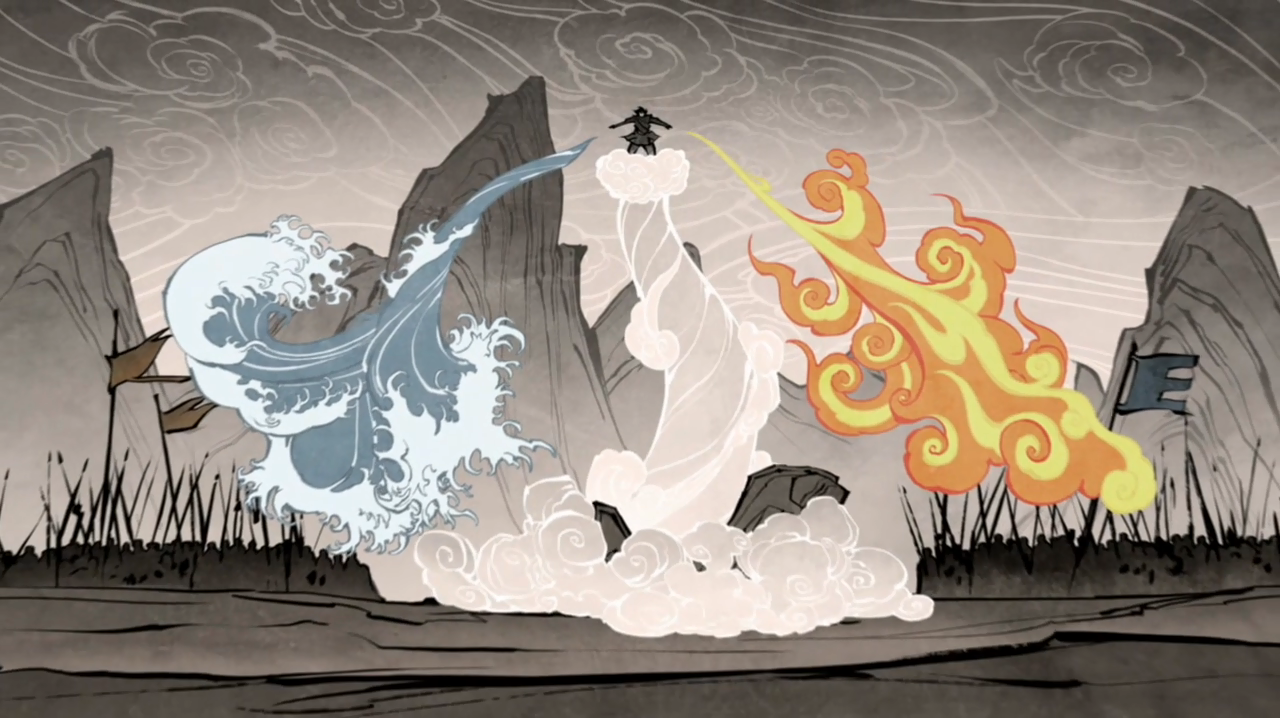
In the Avatar world, we now have a physical manifestation of good and evil with Raava and Vaatu. Making it so clear-cut takes a lot of the tooth out of the human cruelty or scheming out of the villains. Unalaq is somehow the one villain that nearly destroys the world with magical, spirit altering powers because he embraces Vaatu’s influence. There should have been more discussion there to talk about why the evil is necessary to create balance, as we only see how bad things go down by letting Vaatu take control instead of Raava. If you want to promote the importance of balance and merging, then you gotta show both sides of the coin.
Not to mention, I was kind of bothered by how the spirits are held in such high praise in the show, when they appear to be just as flawed as humans are. I always enjoyed how the spiritual nature of the show was very ambiguous, as it was something specific to the Avatar or people who really wanted to destroy the balance like General Zhao. It’s as if the spirits are all-knowing manifestations, but they simply wish to spite humanity for not knowing anything and trying to survive. It’s a part of Eastern philosophy that was touched on incredibly well at first, but when they tried to actually give the spirits character, it just made the writing continue to stand out as weak.
So as a whole, Season 2 is just a hodge-podge of missed opportunities and character flanderization. However, to its credit, it actually did set up many cogs in motion for the later seasons. There are great cameos, there’s more build up for the Avatar’s mythos, and a select few are able to keep their head above water. Even the incredible animation appeared to backslide with botched talking scenes and more distracting set-pieces. I wasn’t sure The Legend of Korra was going to go from here, but I hoped things would go up.
Season 2 Arbitrary Rating: 5 out of 10 Moustaches to Rip Off Incompetent Cops
Book Three: Change
And boy, did they pick up from their mistakes. Konietzko and DiMartino apologized in several audio commentaries of Season 2 explaining the various production errors that harmed the story. They didn’t mean for people to be so offended to Korra’s attitude or disappointed in the dropping the Equalist regime plotline. I would hold them under the firebenders more for these mistakes, but honestly? I believe Season 3 is the best season of The Legend of Korra and they took all their criticism in stride.
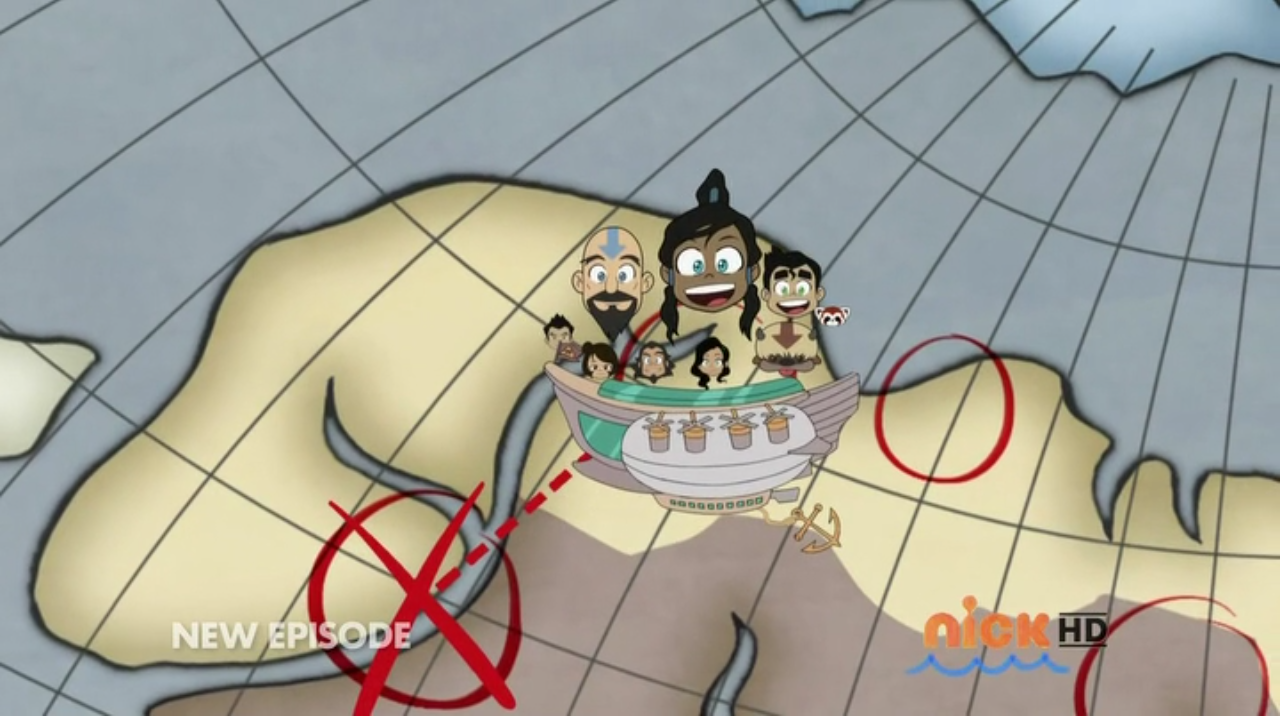
With the forced integration of the spirit world, a strange phenomenon has gifted random people throughout the world to become airbenders. But this sets off a frightening chain of events as the war criminal Zaheer (voiced EXPERTLY by Henry Rollins), sets off to break his partners out of jail and find the Avatar. So as our heroes are exploring across the world to find more airbenders to keep the culture alive, they have to deal with a looming, mobile threat that could destroy them at any time.
Legend of Korra really needed a change in scenery after spending so much focus on Republic City and the South Pole. So not only do we return to the feeling of The Last Airbender by traveling to new places, but we really get to see how the rest of the world has changed in the 70+ years that has passed. I always thought the Earth Kingdom was fascinating with their class system, and their notable cities like Omashu and Ba Sing Se were particular stand-outs. We also get a great villain in the Earth Queen who wants to use the airbenders to form her own army.
Book 3: Change perfectly integrates what was great between both Avatar series. We’ve returned to our heroes (who are written well once again) on the run from a new threat but they have a greater desire to help people in need. Korra, Asami, Tenzin are incredibly well utilized, but we actually give some much needed development to characters like Jinora and Bumi. Even Varrick is brought back to bring in more mythos to our ever-expanding world and add some great comedy to lighten even the darkest situations. After all, he was only a war profiteer.
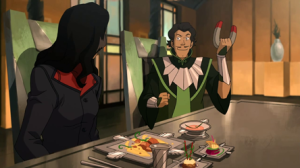
So not only do we have much more to discover and explore, but we’ve brought so many great new elements into the mix. I really enjoyed the metal city of Zaofu, with Suyin added some much needed diplomacy to the group’s headstrong dynamic. We got to learn more about Lin Beifong and more about Mako/Bolin’s family, giving them critical backstory. Yet, the single greatest thing to happen within this season compared to all the others is the sheer force and creative villainy that came from Zaheer and the Red Lotus.
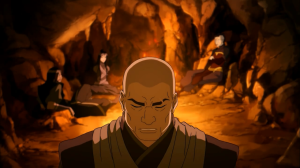
Zaheer and his astoundingly powerful group of benders, Ghazan, Ming-Hua, and P’Li are possibly my favorite villains of the entire universe. What’s so captivating about this group is that we’ve never actually seen the philosophy of the Air Nomads become so warped into an evil idea. Zaheer believes that anarchy and chaos will create a new order that the world has needed since the 100 Years War and the way he has disciplined himself to come so far is simply astonishing. Season 1 had a fantastic “oh-shit” moment, but this season had three incredibly defiant, shocking moments including two on-screen deaths. Making moves this ballsy is likely why Nickelodeon shifted them online.
And the group is not only successful several times with their astounding bending powers and fighting, but they have really grounded chemistry. One of the best moments of this is during “Long Live The Queen” where Ming-Hua and Ghazan captured Bolin and Mako to transport them to Ba Sing Se, as Bolin starts asking them questions about their past. When Bolin guesses correctly about the duo’s unspoken attraction, Ghazan grins and goes “2 out of 3, not bad.” Touches like that make this group of villains so much more interesting than the rest and it makes their history quite believable.
The way Book 3 ends is what particularly gives it an edge above all the other seasons in my opinion. Every single detail from the rise of the airbenders, to the trouble in the Earth Kingdom, and the shackling over the Avatar pays off in an incredible climax. The action shifts so dramatically and the way Zaheer nearly kills off Korra with a special type of poison creates a new quandary for the legacy of the Avatar. But I loved how every character was able to come together to defeat The Red Lotus, with Jinora almost becoming the new hero for a generation of justice-seeking benders.
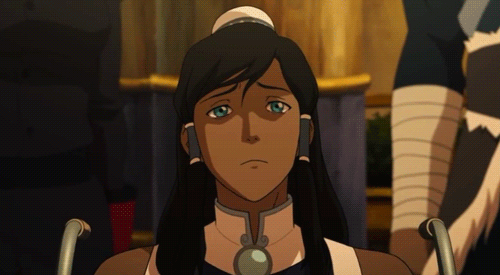
If The Legend of Korra had to end here, I would be completely fine with it. It’s bittersweet considering Korra could have never healed from the trauma of the poison, but it brings forth the balance she’s always wanted for the world. Tenzen’s dream becomes a reality as the Air Nomads will live on and people have now found or developed new families. All was good in the world, but there was one distinct, held frame that proved that there were new evils on the horizon.
Season 3 Arbitrary Rating: 10 out of 10 4000 year old poems
Book Four: Balance
So with the final season being literately pushed into productions, the creators and directors decided to do an interesting choice and push the storyline ahead three years. With a gap in time like that, there was a lot of fan theories of what would the next theme of the season be. Especially since Book 3 left so many ideas left open to close and discover. And what they decided to do was definitely interesting, but it made for a quite the payoff.
The world happened to change quite a lot in that period of time, primarily with Bolin and Varrick who have found employment in the great, military-unifier Kuvira. Mako is currently working as a bodyguard for the only heir to the Earth Kingdom Throne, Prince Wu, and the airbenders have established themselves as a force in the world. As tensions begin the rise with the growing influence of fascism, there’s only one question on everyone’s mind…where’s Korra?
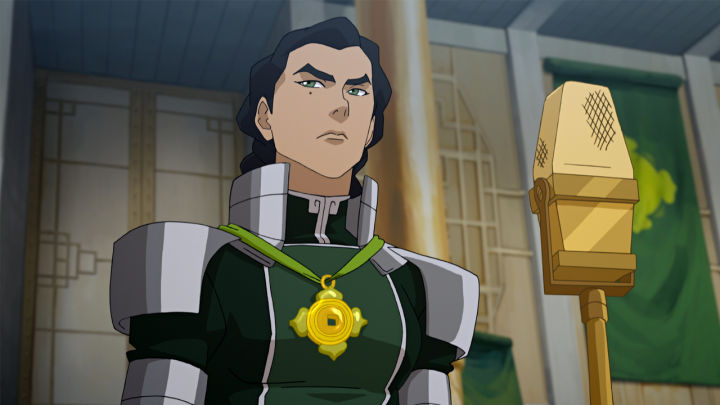
Book 4 continues the series’ sense of gutsy direction as Korra has spent her time suffering from PTSD that came from the fight with Zaheer. You could understand that the creators wanted to break the character down in order to build her back up again, as she started off as more combat-oriented than Aang did. Throughout the arc, we get to see the return of Toph, who is just as enjoyably gruff as she was originally introduced. But the big threat starts to push in on Korra’s healing process, as Kuvira wants to create a giant, cataclysmic weapon using the power of spirit vines.
For the final season, the directors and writers really did a bang-up job ratcheting up the suspense of the new villain and the consequences of following an evil idea with good intentions. I was surprised how so much of the season was focused on Bolin and Varrick, who were constantly justifying there reasons for working with Kuvira, but become more and more aware of how far she was willing to go to bring her vision to life. There’s even a great redemption subplot with Asami trying to bond again with Hiroshi while he’s in prison. All of the characters had pretty good arcs, but this concern brings me to my biggest issue with Book 4. Pacing.
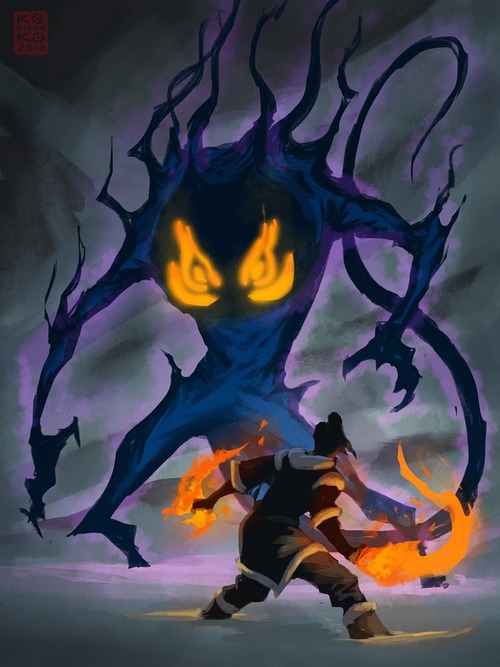
Now again, I can’t bring everything against the creators for the constraints here. Nickeoldeon undeservedly gave their best critically acclaimed show the shaft because it didn’t have good enough ratings. It’s baffling on so many levels because Korra ended up being swapped several times to different channels and new airing schedules. When they gave up and suddenly moved the entire series online…we’re they expecting to get more views that way? It’s such bullshit, but these issues did cause some trouble for the overall story.
Considering the time shift, I felt like the entire season needed three good episodes to develop all the characters. Kuvira’s rise to power is quite significant, but we should have seen more behind the scenes to make her so effective throughout the years. Even Mako got the short end of the stick, as his character was mostly playing the straight man to Prince Wu, who is mostly frivolous to the actual story. Many plot points or dramatic shifts that happened between or during episodes were made far too fast, not giving enough time for the emotions to settle or create slow rising tension and dialogue. It led to a lot of underutilized expectations.
But this issue in pacing didn’t take away from Korra’s best selling point, with the action-oriented animation. With Studio Mir taking complete control again, the bending has been absolutely on point. Because metalbending is so prevalent amongst all the characters, it goes to show you can create so many types of weapons and fighting techniques with characters in motion. This really comes into play as Bolin’s Lavabending is able to accomplish so much, or the fully developed mecha suits create an imposing force for the good guys.

All of the visuals really made our build up to the final climax for the series phenomenal. Kuvira taking Republic City nearly single-handedly with her giant super weapon makes such an impact against the world. It was giving me flashbacks to the intense destruction from Fire Lord Ozai. The way the group comes together to take down Kuvira makes for such a dramatic, even tear-jerking finale as everything is put on the line. But as two small nitpicky notes, I do think it was awkward for Kuvira’s backstory to be crammed into the last 10 minutes and for Varrick and Zhu Li to suddenly marry.
So then we get to what the series finally leads to…and I have to say that all of the ill-will I might have had for the series melted away with their final scene. It made me forgive the forced pace of the season and even the primarily pointless clip show have more weight to it as we reached the ending. Everyone appears to have settled with their victory, embracing the new spirit portal and the unification of good against evil. But we make one little trip.
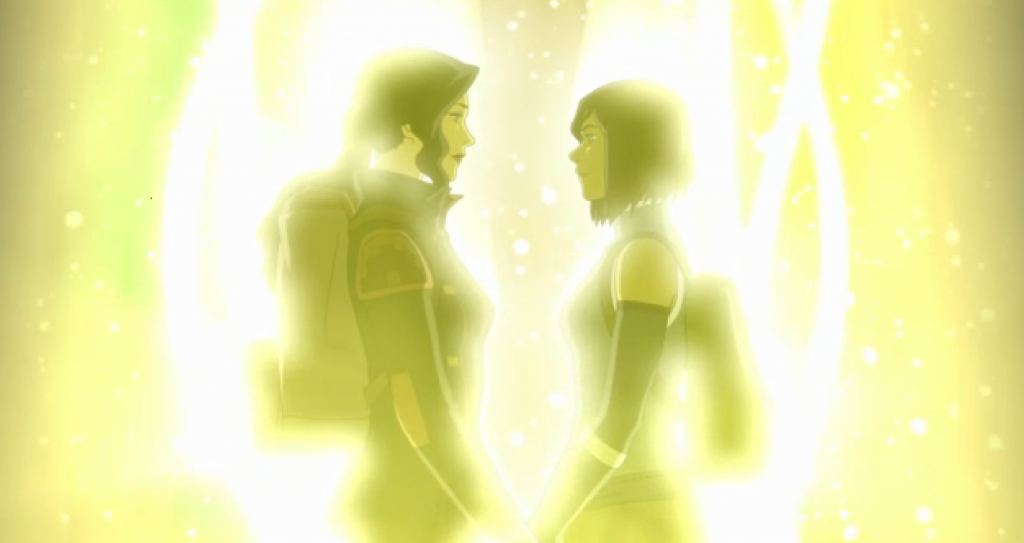
Call it fanservice, call it “not showing enough”, call it a way to punish those who wanted Korra to end up with anyone else. This finale scene of Korra and Asami embracing as they enter the spirit world is a fantastic note to end the show with, giving more hints to what could happen and leaving the fans with a strong message about bonding during the darkest moments.
And not only that, think of how many barriers this broke with this simple scene. It stands as a bisexual character that was one of our true, female protagonists, it’s an interracial couple with a strong, supporting history, and it accomplishes all of this on a children’s animated show. That’s such incredible progress. Usually you have to find obscure, foreign, adult oriented cartoons to do a feat like this. If anything, it goes to show that Nickelodeon should be mocked for having such little faith in such a beautiful, poignant series.
Season 4 Arbitrary Rating: 8 out of 10 Gigantic Mecha Suits
For The Legend of Korra as a whole, it has been one hell of a ride with all the crazy mudslides, tidal waves, and sweat-inducing moments nonstop. In this age where I could talk with all my online friends about where the show was going or how engaging the animation was, The Legend of Korra was a series I happily watched week to week whether it on TV or on the Internet.
However, I do have to admit that the original The Last Airbender series was overall a better product. That’s nothing to be ashamed of, it’s perfect in it’s own right; a pinnacle of Western Animation. And The Legend of Korra is really, REALLY good too…but just doesn’t make it. Chalk it up as much as you want to bad decisions from the studio, but Book 2 is still lacks the overall quality that made everything else so good. I imagine we’ll all watch that season for completionist’s sake and to catch foreshadowing, but it’s going to be rough to see it all.
It’s very much like comparing Batman: The Animated Series to Batman Beyond or Superman: The Animated Series. It’s all incredible, but one was more compelling for being so complete and consistently well told.

Still, Korra deserves all the credit for everything it did right. The way it captured mixing the mystical sense of bending with technology was flawless. It still had engaging characters who varied between old sensibilities versus our new culture. The series created so many new possibilities to explore in the past, present, and future of the entire universe. And it had what can easily be called the best action scenes of any animated program so far.
The Legend of Korra Series Rating: 8.5 out of 10 Portals to the New Romance
So I will miss the journey of these characters. They ended on a great note, it feels like the universe is in balance, and we’ve all gained the bounty of having another great, mature cartoon that will last for decades. The only thing not ambiguous is the future of Nickelodeon…
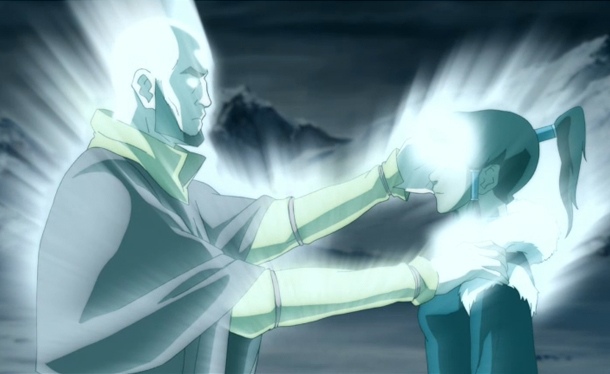
Thanks everyone for reading this incredibly detailed review and analysis of The Legend of Korra. What do you think? Did you love the ending? Do you agree/disagree with any of my points? Do you think the universe will be expanded again? Leave a comment below and add your own insight!



